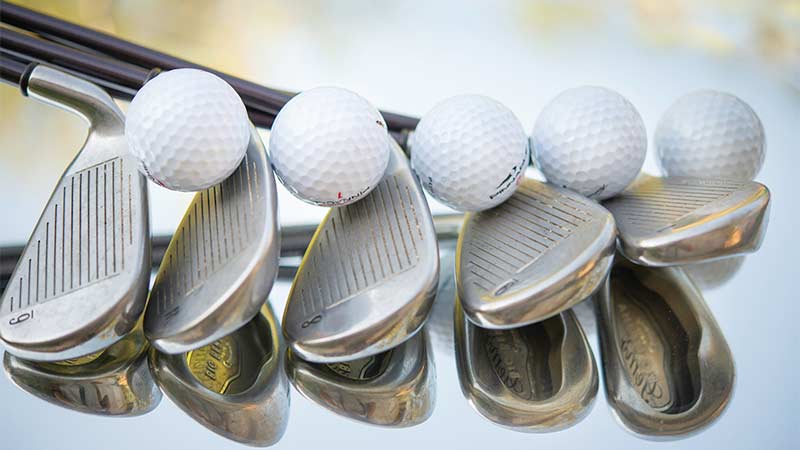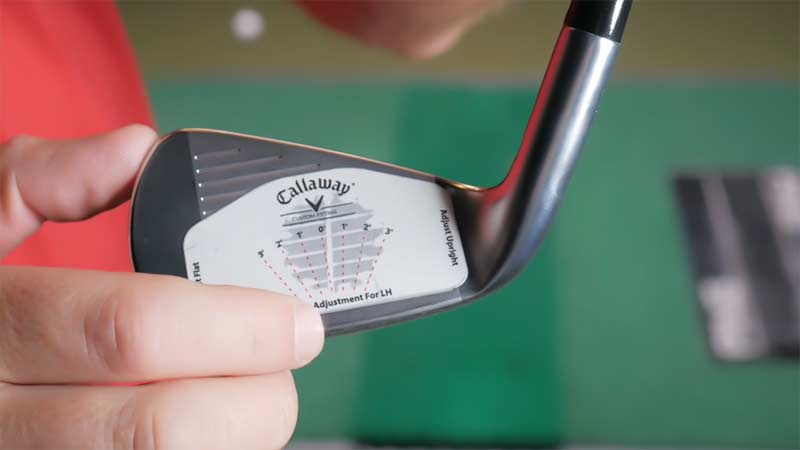In the intricate world of golf, precision is paramount. Every nuance of equipment can tip the scales between a perfect shot and a near miss. One such subtle yet pivotal factor is the lie angle of a club.
Amidst the myriad discussions on swing techniques and ball trajectories, the question arises: 1 degree lie angle, will it actually make much difference?
Golf enthusiasts often find themselves at a crossroads, deliberating whether this seemingly marginal adjustment can yield a substantial difference in ball flight.
In this exploration, we delve into the realm of golf equipment intricacies to uncover the significance of a 1-degree lie angle adjustment, probing whether it stands as a game-changer or merely a negligible tweak in the pursuit of the perfect swing.
Join us on this journey as we dissect the nuances of golf technology and seek to demystify the impact of minute alterations in equipment configuration.
1 Degree Lie Angle, Will It Actually Make Much Difference?
In the intricate world of golf equipment customization, the debate surrounding a 1-degree lie angle adjustment is both common and contentious.
Golfers often grapple with the question: does such a seemingly small tweak truly make a substantial difference in one’s game?
This exploration aims to dissect the nuances of this adjustment and shed light on its potential impact on ball flight, accuracy, and overall performance.
The Mechanics of Lie Angle
Understanding the mechanics of a golf club’s lie angle is crucial before delving into its effects. The lie angle is the angle formed between the club’s shaft and the ground when the club is at rest.
This seemingly minor detail plays a pivotal role in how the club interacts with the turf and, consequently, influences the trajectory of the ball during a swing.
Precision and Ball Flight
A nuanced exploration into the impact of a 1-degree lie angle adjustment reveals its significance in achieving precision in ball flight. Even this slight alteration can alter the club’s orientation at impact, potentially influencing the direction and shape of the shot.
This section will delve into the science behind how precision in lie angle contributes to a golfer’s ability to control the ball’s trajectory.
Accuracy and Consistency
For golfers seeking precision and consistency in their shots, the lie angle becomes a critical factor. This segment will explore how a 1-degree adjustment might affect the clubface’s position at impact, addressing its potential role in promoting shot accuracy and minimizing unwanted deviations in ball flight.
Real-world examples and experiences from golfers who have experimented with lie angle adjustments will be considered.
Player Comfort and Feel
Beyond the technicalities, the psychological aspect of golf cannot be overlooked. The feel of a club in a golfer’s hands can significantly impact confidence and overall performance.
Here, we’ll discuss how a 1-degree lie angle adjustment might influence a player’s comfort level, exploring whether it can enhance the overall feel of the swing and contribute to a more confident and controlled execution.
Individual Variation and Customization
No two golfers are identical, and the impact of a 1-degree lie angle adjustment may vary from player to player. This section will discuss the importance of individualized customization, taking into account factors such as swing mechanics, body posture, and playing style.
Insights from professional club fitters and golf coaches will be incorporated to emphasize the tailored approach required for optimal results.
Balancing Tradition and Innovation
The golfing world is steeped in tradition, yet it continues to embrace technological innovations. This segment will explore how the age-old debate between tradition and innovation intersects with the question of lie angle adjustments.
Are traditionalists resistant to change, or do they recognize the potential benefits of adapting to modern equipment customization trends?
Case Studies and Testimonials
To substantiate the discussion, real-world case studies and testimonials from golfers who have experimented with 1-degree lie angle adjustments will be presented.
Their experiences, whether positive or nuanced, will provide valuable insights into the practical implications of this customization.
Practical Considerations and Implementation
For golfers contemplating a 1-degree lie angle adjustment, practical considerations and implementation tips are essential.
This section will offer guidance on how to assess the need for such an adjustment, the potential impact on specific clubs, and the recommended approach for testing and implementing changes without compromising overall performance.
How Do I Choose the Right Lie Angle for Me?

Selecting the right lie angle for your golf clubs is a pivotal decision that directly influences your swing dynamics and overall performance on the course.
This guide aims to demystify the process of choosing the optimal lie angle for you, considering factors ranging from swing mechanics to individual comfort.
Understanding Lie Angle Basics
Before delving into the selection process, it’s crucial to comprehend the basics of lie angle. The lie angle is the angle formed between the club’s shaft and the ground at address.
This angle plays a crucial role in determining how the club interacts with the turf during a swing, ultimately affecting the direction and trajectory of your shots.
Assessing Your Swing Mechanics
One of the primary considerations in choosing the right lie angle is understanding your own swing mechanics. This section will guide you through a self-assessment process, considering factors such as your posture, swing plane, and impact position.
Recognizing how your swing naturally unfolds provides valuable insights into the lie angle adjustments that might benefit your game.
Seeking Professional Guidance
For a more accurate assessment, consulting with a professional club fitter or golf instructor is highly recommended. Professionals possess the expertise to analyze your swing in detail, using advanced tools and techniques.
This section will delve into the benefits of seeking professional guidance, emphasizing the personalized insights they can offer to optimize your lie angle.
Player Comfort and Feel
Beyond the technical aspects, player comfort and feel are integral components of the lie angle selection process. Exploring how different lie angles affect the overall feel of your swing and impact your confidence on the course is essential.
This section will guide you in finding the delicate balance between technical precision and the subjective comfort that enhances your overall golfing experience.
Considering Your Playing Style
Every golfer has a unique playing style, and the right lie angle should align with your individual approach to the game.
Whether you are an aggressive player seeking more power or a precision-focused golfer aiming for accuracy, this section will discuss how the lie angle contributes to tailoring your equipment to match your playing style.
Trial and Error: Experimenting with Lie Angles
Choosing the right lie angle often involves a degree of trial and error. This section will provide insights into how you can experiment with different lie angles, perhaps starting with a 1-degree adjustment, to observe its impact on your shots.
Tracking performance changes and adjustments to your comfort level during this experimentation phase is key to finding the optimal lie angle.
Recognizing the Impact on Specific Clubs
Different clubs in your bag may benefit from varied lie angles based on their intended use and your preferred shot shapes.
This section will break down considerations for specific clubs, such as drivers, irons, and wedges, offering practical advice on tailoring lie angles to suit the demands of each club.
Assessing Environmental Factors
Environmental conditions, such as the type of turf you commonly play on, can influence the effectiveness of a particular lie angle.
This section will discuss how factors like course conditions and climate may impact your decision, ensuring that your chosen lie angle is well-suited to the environments where you most frequently play.
Fine-Tuning Over Time
As your golf game evolves, so too may your preferences and requirements. This section emphasizes the importance of regularly reassessing your lie angle, especially as your swing mechanics and playing style naturally progress.
Fine-tuning your equipment ensures that it remains in harmony with your developing skills and preferences. Choosing the right lie angle is a dynamic process that combines technical analysis, personal comfort, and adaptability.
By understanding your unique swing mechanics, seeking professional advice, and embracing a trial-and-error approach, you can navigate the journey of finding the optimal lie angle that enhances your performance and elevates your enjoyment of the game.
FAQs
What is a 1-degree lie angle, and how does it impact my golf game?
A 1-degree lie angle refers to the angle formed between the golf club’s shaft and the ground. This subtle adjustment can influence the club’s interaction with the turf, affecting ball flight and shot accuracy. While seemingly minor, it can have a notable impact on your overall golf performance.
How do I determine if a 1-degree lie angle adjustment is right for me?
Assessing your swing mechanics, seeking professional guidance, and considering your comfort and playing style are crucial steps. Conducting a self-evaluation, consulting with a club fitter, and experimenting with different lie angles can help you find the optimal adjustment.
Can a 1-degree lie angle affect different clubs in my bag differently?
Yes, various clubs serve different purposes, and their optimal lie angles may vary. Drivers, irons, and wedges may benefit from specific lie angle adjustments based on their intended use and the shots you aim to achieve.
Are there environmental factors to consider when choosing a 1-degree lie angle?
Absolutely. Course conditions, such as the type of turf and prevailing weather, can impact the effectiveness of a particular lie angle. Assessing these environmental factors ensures that your chosen lie angle is well-suited to the conditions where you commonly play, optimizing performance accordingly.
Is a 1-degree lie angle adjustment a one-time decision, or should I reassess over time?
It’s advisable to reassess your lie angle over time. As your golf game evolves and your skills progress, your preferences may change. Regularly fine-tuning your lie angle ensures that your equipment remains in sync with your developing abilities and playing style.
Conclusion
The debate surrounding the influence of a 1-degree lie angle on golf performance reveals a delicate interplay between precision and perception. While the golfing community is divided on the magnitude of its impact, our exploration suggests that, indeed, the devil lies in the details.
The subtlety of this adjustment can unveil a cascade of effects on ball flight, shot consistency, and overall player comfort. As players navigate the quest for the optimal lie angle, it becomes apparent that personalization is key.
What might be a negligible change for one golfer could be a transformative shift for another. The 1-degree lie angle, seemingly modest, emerges as a dynamic variable that warrants attention in the pursuit of the perfect swing.
Ultimately, the quest for mastery in golf extends beyond the swing itself; it encompasses a nuanced understanding of the tools at one’s disposal.








Colin McCarthy